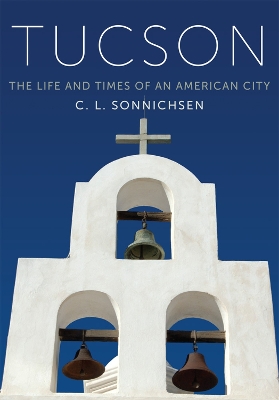Dedicated to all those living elsewhere who would rather be in TucsonTucson is the first comprehensive history of a unique corner of America, a city with its roots in Indian and Spanish colonial history; its skies broken by the towers of a Sunbelt metropolis.
In these pages C. L. Sonnichsen, dean of southwestern historians-and a Tucsonan by adoption - chronicles with humor and affection the growth over two centuries of one of the region's most colorful communities.
Today's metropolitan Tucson is a city of half a million people. Set along the Santa Cruz River in the Lower Sonoran Desert in a great basin surrounded by soaring mountain ranges, it is different in many ways from any other city in the United States. Like all other Sunbelt centers, however, it is growing by great leaps and bounds. A popular winter resort, it attracts fugitives from the frozen North. The site of the University of Arizona, it draws many with an intellectual bent. For artists the attractions of the ""Old Pueblo"" are all but endless. The city booms with new people, industries, shopping centers, and subdivisions.
Newcomers tend to bring along their ideas, life-styles, and landscapes, including Bermuda grass and mulberry trees, and have moved Tucson closer to the familiar patterns of urban America. But tradition and geography limit their efforts, for Tucson has always been the center of a separate world, with a history, population, and character of its own. It was an oasis far from other Indian cultural centers a thousand years ago.
It was a remote outpost in 1776, when the Spaniards founded a presidio there. It was not far from the edge of the world when Anglos began settling along the Santa Cruz not long before the Civil War. Even with the coming of the railroad, the airplane, and television, Tucson has remained insulated from the rest of the country by distance and by special habits of mind. Much of Tucson's charm derives from this insulation.
Beyond the separateness, says the author, is a fact too often overlooked: Deserts Were Not Made for People. Technological skills make survival possible for most of the population; only the long-resident Papago Indians are truly at home there. In such a difficult environment early-day white settlers had to make do with little, undergo much, and be prepared for the worst.
Today their successors live in what is essentially an artificial environment, using their natural resources as if they were inexhaustible - for water Tucson depends entirely on underground sources-and continue to enjoy the genial, if sometimes superheated, climate, the casual life-style and western friendliness of the population, the Indian-Spanish-Mexican cultural and historical ambience, and the artistic and intellectual life. The problems of other great American cities are Tucson's also. Perhaps it is those very problems and the uncertainty of the future that add a special urgency to the savoring of life in this special corner of America.
- ISBN13 9780806120423
- Publish Date 11 April 2022
- Publish Status Active
- Publish Country US
- Imprint University of Oklahoma Press
- Format Paperback
- Pages 383
- Language English
